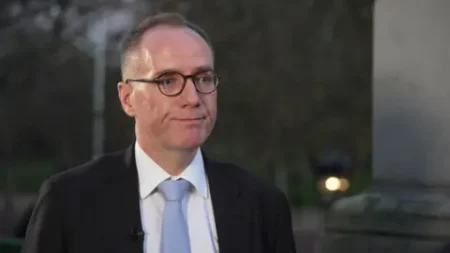**US Green Energy Firms Brace for Federal Funding Cuts**
In the evolving landscape of renewable energy, US green energy companies are sitting on edge as substantial federal funding cuts loom on the horizon. Notably, firms such as HIF Global, which is planning a monumental $7 billion e-methanol factory in Matagorda County, Texas, face uncertainty regarding potential investments due to changes in federal tax credits. This facility promises to be the largest of its kind worldwide, aiming to produce green hydrogen and e-methanol using captured carbon dioxide and renewable energy.
Despite the ambitious vision presented by HIF Global, the company must delay its final investment decision until the Republican-led Congress clarifies its stance on clean energy tax incentives. The fate of these subsidies is currently tied to an extensive budget bill that is under consideration within the Senate. In its latest version, the proposed legislation looks to cut the hydrogen tax credit significantly while scaling back other essential funds that have traditionally supported clean energy projects. Lee Beck, HIF Global’s Senior Vice President for Global Policy and Commercial Strategy, expressed that the tax credits are vital for maintaining competitiveness against international producers, especially those in China.
The uncertainty isn’t limited to HIF Global alone; it reflects a wider industry concern. According to Adie Tomer from the Brookings Institution, the political climate in the United States appears to be moving away from supporting renewable energy efforts, contrasting sharply with trends observed in other developed countries. This shift is particularly pronounced under the Trump administration, which has been notably hostile to green energy initiatives, including withdrawing from the Paris Climate Agreement and suspending renewable projects on federal lands.
Trump’s anti-green rhetoric is well-known, as seen in his labeling of wind farms as “disgusting” and “ugly.” Coupled with these sentiments, his administration paused funding associated with the Green New Deal, disparagingly referring to it as the “Green New Scam”. These grants and loans from the Infrastructure Investment and Jobs Act (IIJA) and the Inflation Reduction Act (IRA) have been pivotal in channeling billions into the clean energy sector, thus underpinning many projects across the nation.
Jessie Stolark, executive director of the Carbon Capture Coalition, indicates that the vagueness from the current administration regarding future funding is hindering project developments, especially in carbon capture initiatives. While some funding for preliminary phases has been secured, there is significant uncertainty about the progression to subsequent stages. Such instability casts a long shadow on the future of innovative carbon management technologies, which are crucial for the energy transition.
Amid this turmoil, discussions are heating up about the possible amendments or a complete repeal of the IRA as part of the budget negotiations. Many of its tax credits, including those promoting electric vehicle adoption and energy-efficient home improvements, are under threat. Some credits may face earlier phase-out dates or become exceedingly difficult to secure, especially for projects based in constituencies represented by Republican lawmakers.
Critics argue that the Biden administration’s green energy programs are excessively costly and warn that the fiscal implications for taxpayers are profound. A report from the Cato Institute emphasizes these concerns, calling for a full repeal of the IRA’s energy tax credits, which it characterizes as possessing “potentially unlimited liability” for American taxpayers.
Moreover, the first quarter of 2025 has shown a concerning decline in actual clean energy investment, dropping by 3.8% to $67.3 billion, as reported by the Clean Investment Monitor. This marks the second consecutive quarter of declining investment, primarily attributed to high inflation, increased interest rates, and a global supply chain crisis. Export tariffs on necessary components further exacerbate these challenges, causing delays in project decisions and discouraging investments.
Despite these setbacks, companies like LanzaJet, which manufactures Sustainable Aviation Fuel (SAF), are adapting their marketing strategies to navigate the shifting landscape. The firm is awaiting a $3 million grant to support its initiatives, reflecting the intricate interplay between funding and project viability in the current atmosphere of uncertainty.
As federal budget negotiations unfold, the long-term fate of the clean energy sector in the US remains precarious, with many stakeholders watching closely to see which direction the political winds will blow. With numerous factors converging, it remains to be seen how the landscape will reshape in the coming months for green energy firms across the country.











